A tree can make a living wall, green curtain, or vibrant archway. Pleached trees are amazing. They’re not your average tree. These trees are trained to grow flat and tall, creating a stunning visual element in your yard. It’s nature’s art!
Maybe you want to define a space or add sophistication to your outdoor area?
We’ll look at pleached trees and how they can be used as living hedges. We’ll also look at the many types of evergreen trees. We’ll talk about why you should choose a pleached tree, the different types, and how to plant and take care of them. Ready to learn more? Let’s get started!
What is a Pleached Tree?
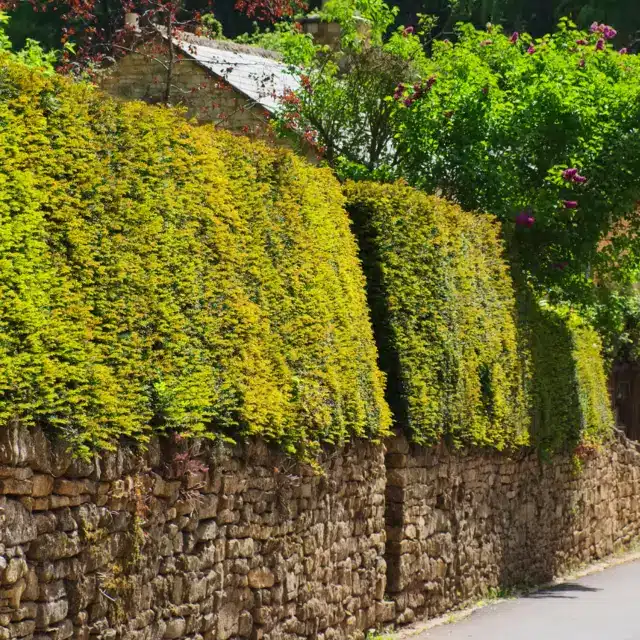

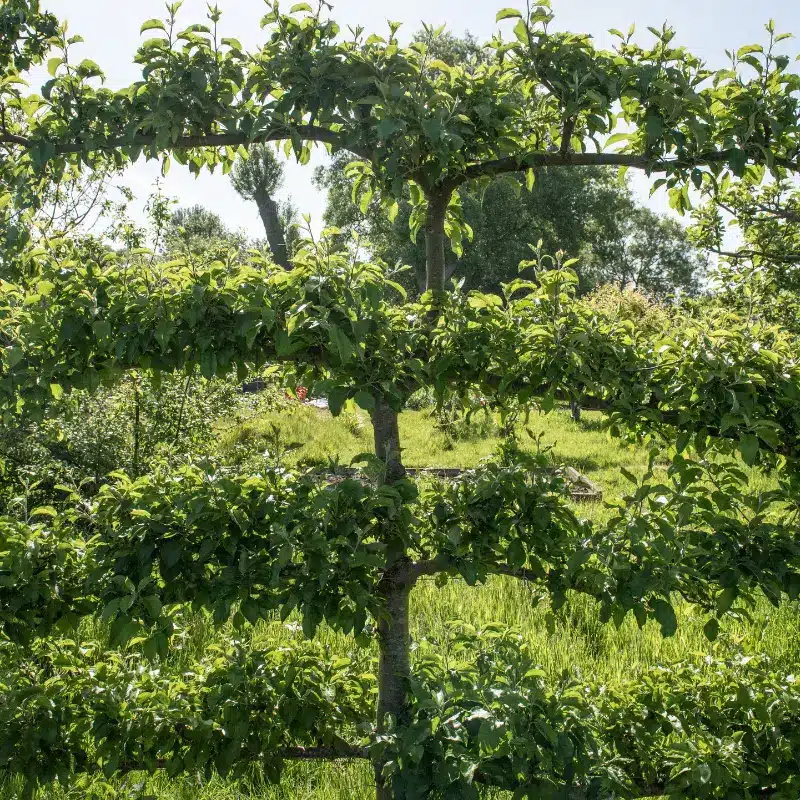
You’re interested in pleached trees. What are they? They’re like a green wall!
Pleaching is an ancient way of training trees into flat, vertical planes. It’s like weaving a tapestry, creating a stunning feature for your garden. You prune branches into a flat plane and intertwine them to shape them into a desired form.
This technique has been around for centuries. It comes from Europe. Pleaching is a French word for interlacing branches to make hedges or arbors. This practice has been used to create stunning garden features for centuries. Today, it’s commonly called “hedges on stilts”.
Have you seen a pleached tree? What do you think they do in a landscape?
Why Choose a Pleached Trees?
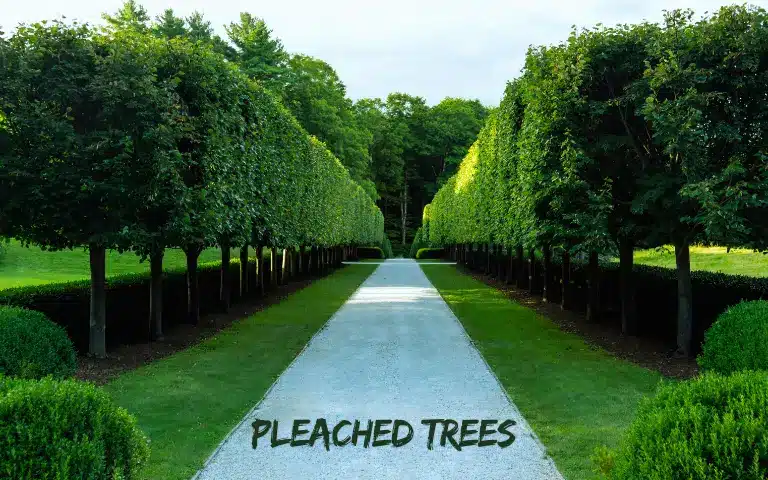
You want to add trees to your garden. That’s a good idea! Pleached trees are great for your landscape.
- Unique look: Imagine a tree in your garden making a living wall or archway. Pleached trees are great focal points and add elegance to your outdoor space. They make any garden special.
- Privacy: Need more privacy in your backyard? Pleached trees can act as natural screens or hedges, creating a sense of seclusion and peace. They block out views and create a relaxing space.
- Space-saving: Do you have a small garden? Pleached trees are perfect for those situations! They grow vertically, so you can use less space without losing impact. You can create a green wall without taking up space.
- Architectural integration: Pleached trees blend nature and design. They can be used in formal, modern, or rustic gardens. A pleached tree adds interest to any space.
Ready to create a beautiful, functional garden? Pleached trees can help you achieve your goals.
Choosing the Right Tree for Pleaching
Now you’re excited about pleached trees, it’s time to choose the right species for your garden. With so many options, We’ll explain it all.
Popular choices
Here are some popular trees for pleaching:
- Hornbeam: Is a fast-growing, hardy tree that tolerates a range of conditions. It has dense foliage that makes a great screen. Its leaves stay on in winter, creating a beautiful effect.
- Beech: Another good choice is the beech tree. Its bark is beautiful and it can tolerate many climates. They can grow tall, creating a dramatic effect in your garden.
- Linden: Linden trees have pretty flowers and spread out gracefully. They can be trained to create a soft, elegant look.
- English Yew: Is a classic choice for formal gardens. It is a slow-growing, evergreen tree that can be trained to create dense, intricate pleached forms. It can live a very long time, making it a good investment for your landscape.
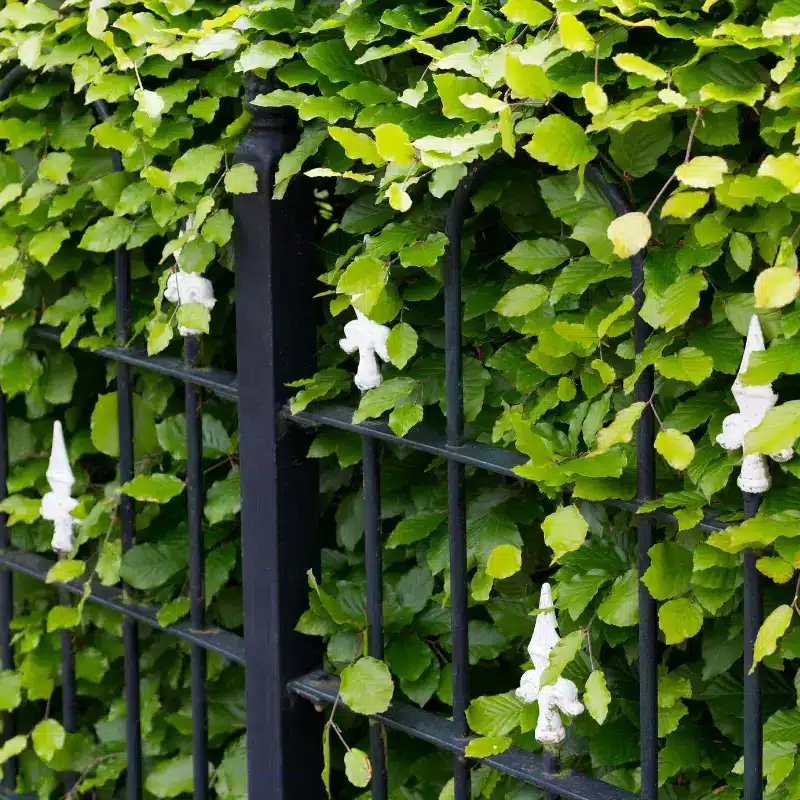
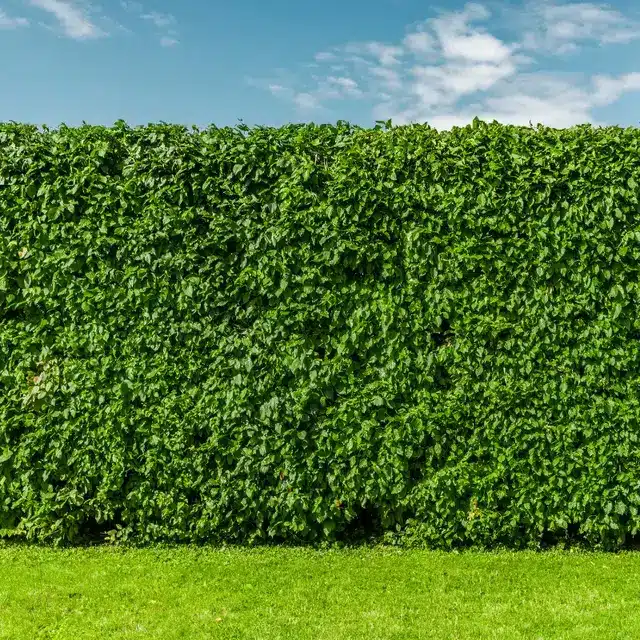
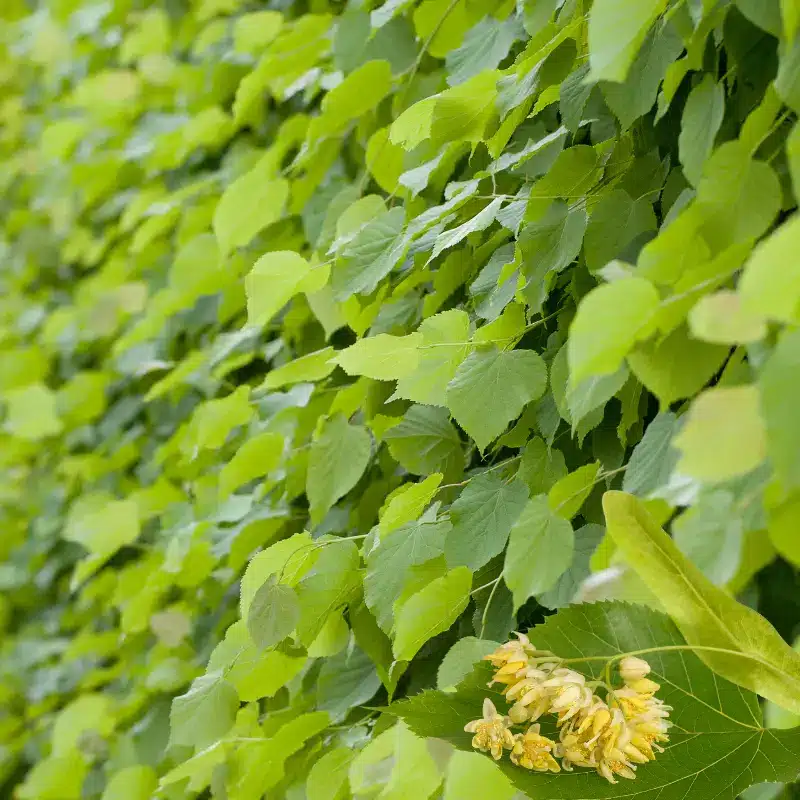
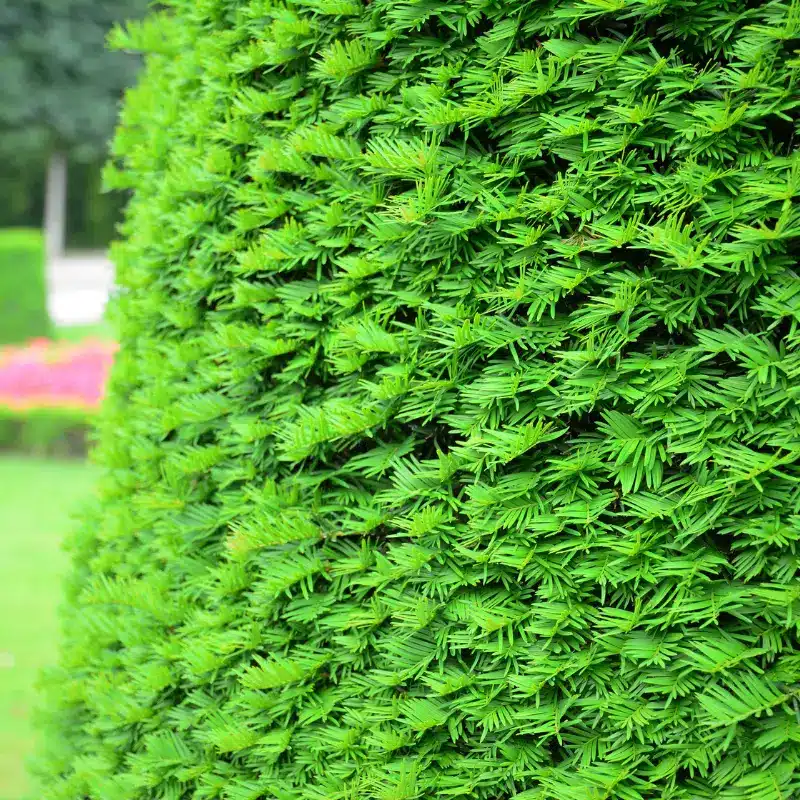
Local climate
Ask your local nursery or arborist about local climate. They can give you specific climate and soil recommendations. They can also help you choose trees that are easy to find.
Considerations
When choosing a tree, consider these factors:
- Growth habits: How fast will the tree grow? How tall will it be? Choose a tree that fits your space and your desired height. Do you want a fast-growing tree or a more stately one?
- Hardiness: How well will the tree do in your climate? Think about the weather and soil in your area.
- Desired height: Do you want a tall or short hedge? The tree’s height affects how easy it is to prune.
Practical applications
I chose hornbeam for my pleached trees because it grows fast, tolerates different conditions, and can regrow from older wood. Hornbeam is ideal for hedging. Without pleaching, these trees would have shaded the garden too much. Other good pleaching trees are lime, magnolia, photinia, and hawthorn.
How to Pleach a Tree
You’ve got the right spot for your trees and the right species. Time to train! Here’s a guide to help you create your own living masterpiece.
Step-by-step guide:
- Step 1: Choose a young tree with a strong trunk and upright branches. A tree about 2-3 feet tall is a good size to start with. Make sure your tree can handle training.
- Step 2: Pruning and Training Prune branches to shape the tree. You’ll shape your tree into a flat, vertical plane. Think of it like sculpting a living work of art. You’ll remove any branches that don’t fit your vision for the pleached form.
- Step 3: Once you’ve pruned your branches into a flat plane, tie them together to create a solid structure. Use soft materials like twine or rubber bands to tie branches together. Don’t damage the tree’s bark.
- Step 4: Like any other tree, pleached trees need regular maintenance to look their best. You’ll need to prune them regularly to keep them looking good. You’ll prune trees at least once a year, often in the late winter or early spring.
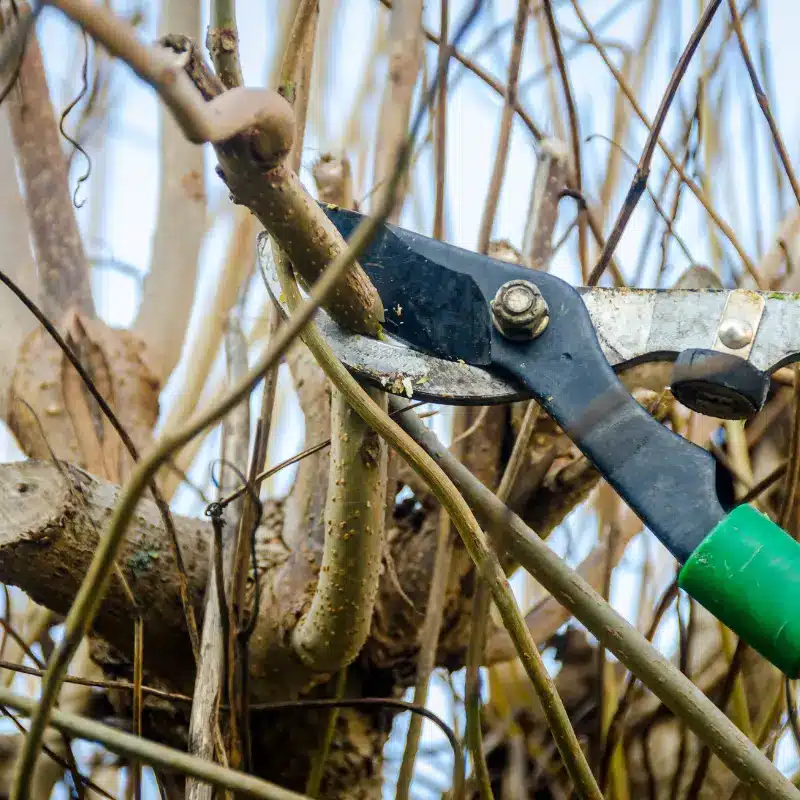
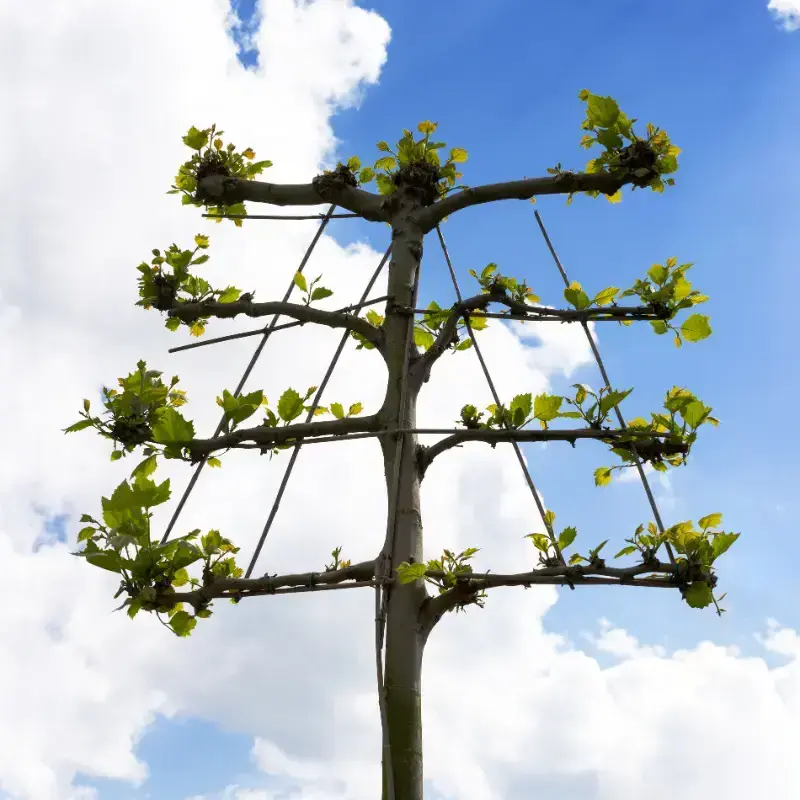
Key takeaways:
Pleaching takes time. It’s not a quick fix for creating a screen or adding interest to your garden. It takes time and care. Think of it as an investment in your landscape. Seek expert guidance if you’re new to tree training.
Tips for Successful Pleaching
Pruning techniques:

- Time of Year: The best time to prune for pleaching is typically late winter or early spring before the tree begins to grow. Typically, I prune in July and sometimes again in September if needed.
- Pruning Tools: Use sharp, clean pruning shears and a saw for larger branches. I prefer to use a cordless hedge cutter for its lightness and ease of use, along with a tripod ladder for stability.
- Techniques: Here are a few key pruning techniques you’ll want to master for your pleached trees:
- Topping: This involves cutting the top of a branch to encourage branching lower down the tree. You’ll use this technique to create a dense, bushy look.
- Pinching: This involves removing the tip of a new shoot to promote side branching. You’ll use pinching to encourage a more compact and even shape.
- Shaping: This involves pruning branches to create a specific form, like a flat plane or a curved arch. You’ll use shaping to guide the growth of your pleached tree and create the look you desire.
Materials for tying:
- Metal posts and training wires help guide the branches, though wooden posts or even just canes and twine can also be used.
- Use soft, flexible materials like twine or rubber bands for tying branches. Avoid materials that can damage the bark.
- Using flexible plastic tubing to tie branches ensures they grow without damage.
Watering and fertilizing:
Here’s how to water and fertilize your pleached trees. If your tree is stressed, adjust your watering and fertilizing schedule.
- Water often. Pleached tree needs water, especially in the first year. Keep soil moist. Water more often in hot, dry weather.
- Fertilize yearly. Fertilize pleached tree once a year. Use a granular or liquid fertilizer.
Pro tip:
- Plant pleached trees in groups of two, spaced about two meters apart. A double line of trees creates avenues and intertwines the branches.
- When training pleached trees, decide where you want the first tier to start. Higher starting points make pruning easier.
- Use a trellis or support structure to help guide the branches and maintain the pleached form.
- Simplify the structure for easier maintenance.
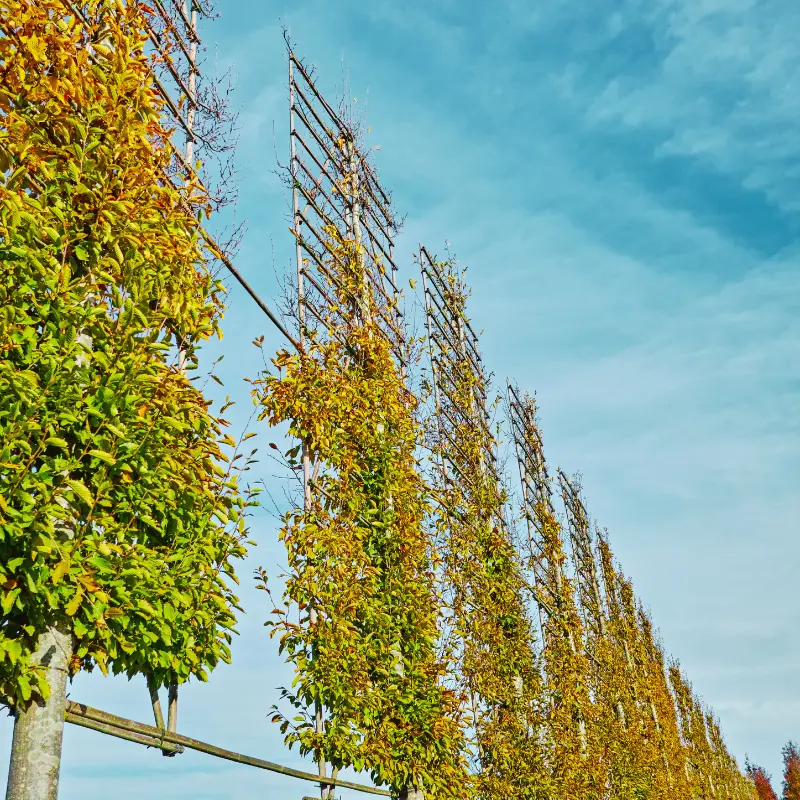
I used pleached trees to screen my neighbor’s extension. The trees gave us both privacy. Placing pleached trees on both sides creates a balanced, symmetrical look that focuses the view towards the center of the garden.
Top 5 Most Popular Privacy Pleaching Trees
1. Green giant arborvitae
The Thuja Green Giant is the most popular privacy tree. It grows up to 5 feet per year, the fastest of any evergreen pleaching tree. It smells like cedar and has dark green leaves. It creates a beautiful wall that shields you from views, noise, and wind.
Grow Zones: 5-8.
2. Nellie stevens holly
This holly grows super fast, like up to 3 feet every year. It can get as tall as 20 to 25 feet, but you can trim it down to any size you want. The dark green leaves and red berries look really nice.
Grow Zones: 6-9.
3. Emerald green arborvitae
Is awesome for folks who ain’t into big trees. It reaches around 12 to 14 feet in height. If you plant them 4 to 6 feet away from each other, they make a thick, vibrant green hedge that doesn’t need much trimming.
Grow Zones: 2 through 7.
4. Leyland cypress
The Leyland Cypress is a fast-growing, hearty tree that can reach heights of 60 to 90 feet with a 15 to 25-foot spread. Its classic upright pyramid shape and bluish-green color make it a favorite for landscapers looking to create a privacy screen.
Grow Zones: 5 through 9.
5. Cryptomeria japonica (Japanese cedar)
Also called Japanese Cedar, this fast-growing evergreen can reach 45 feet tall and 20 feet wide. It thrives in full sun to partial shade and is easy to grow, tolerating a variety of soil conditions.
Grow Zones: 5 through 9.
Conclusion:
When pleaching trees, it’s important to consider the impact on neighbors, as these screens can block sunlight. Communicate with them to ensure mutual satisfaction. Small trees establish faster and are more economical than larger, pre-formed trees. Keep the base of the trees weed-free for the first three years to promote healthy growth.
Bare-root trees often do better than container-grown ones. Pleaching is a good way to improve your garden. It’s practical and looks good.
Pleached trees are a versatile and beautiful choice for screening views or adding stately features to your garden.
Frequently Asked Questions
How long does it take to establish pleached trees?
It takes years to establish pleached trees. It takes 2-3 years to train and shape the trees, and then they need to be maintained. It takes 5-7 years or more for trees to mature and reach their full potential.
Can pleached trees be grown in containers?
Yes, pleached trees can be grown in containers, but it takes care. Containers should be big enough for roots to grow, and trees need more water and food than those planted in the ground.
Can pleached trees be used to create a living fence?
Pleached trees are often used to create living fences. Their dense foliage and structured growth make them ideal for natural boundaries that are both functional and aesthetically pleasing.
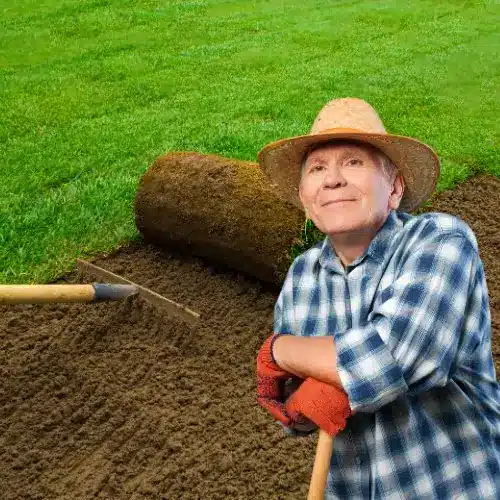
About the Author
Experienced gardener with 20 years’ expertise in home gardens.
I share with you tips and tricks I’ve learned over the years to help keep your plants happy and healthy.



